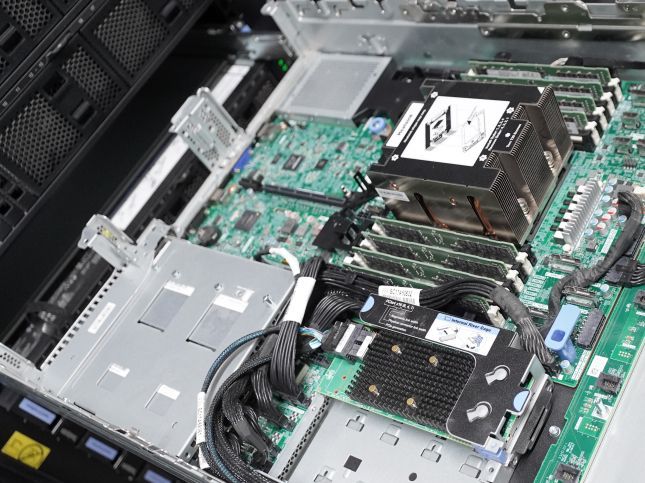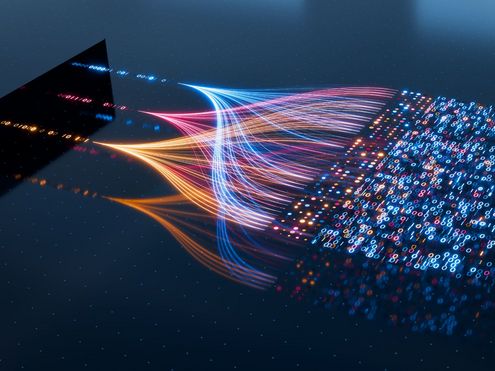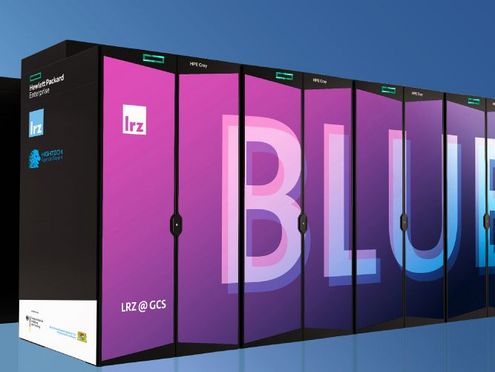


Computer technology is changing rapidly. That is why the LRZ is researching innovative hardware and software for energy-efficient operations at the computing centre and to provide users with the best possible computer technology.
How will the computers of the future work? The activities of our Future Computing Team centre around this question. The LRZ’s specialists are working with scientists from other institutes and experts from tech firms to explore state-of-the-art components for use in high-performance computing (HPC). In addition to working methods and developing benchmarks for operations, the focus here falls on the energy requirements of processors and systems.
The LRZ has created a test environment called BEAST, the Bavarian Energy, Architecture, and Software Testbed, for sharing experiences on innovative hardware with researchers, for co-design projects with start-ups and companies, and for taking part in research projects related to supercomputing: In times of growing complexity in IT, we want to get a comprehensive understanding of technological concepts so that we can ensure that the LRZ’s computer resources are energy-efficient, practical, and useful in the daily application of science and research.
Dennard Scaling has already been exhausted, and Moore’s law is pushing its limits. It will no longer be possible to double the performance of processors in a short time, and the increasing energy requirements of chips and systems also need to be brought under control. The consequences of this are felt when planning supercomputers: Hardware is tailored to application fields for the sake of greater performance and economy. As a result, HPC systems today integrate a great deal more components than ever before. The LRZ’s Future Computing Group and scientists from the Technical University of Munich (TUM) state their views on the development of supercomputing in a position paper on the future of supercomputing and integrated HPC systems.
The LRZ has installed the Bavarian Energy, Architecture- and Software Testbed ( or BEAST for short) to comprehensively test processors, accelerators and other components: It collects performance figures from the latest hardware and creates benchmarks for evaluating components and software. This involves experimenting with clock frequencies and other control elements to sound out the energy requirements. And this is where the plans for the next supercomputers are developed or planned components are optimised. BEAST is not an LRZ service but is made available to selected research groups.

The Future Computing Team works closely with Computational X Support (CXS) when working on BEAST: This is because planned components can be tested in the test environment and, if necessary, optimised or stabilised for use at LRZ. BEAST can also be used to adapt and improve software and scientific code: Experience that is also highly valued by in tech firms – the future of supercomputing lies in co-design and close technical coordination with potential user groups. This also increases user-friendliness.

Thousands of sensors are installed inside the LRZ’s supercomputers and the computer cube, which record values from functions or the environment on a daily basis. They are collected in Data Centre Data Base (DCDB), an openly available, plugin-based monitoring tool from the LRZ that is now used as reference at many supercomputing centres. DCDB uses data to reveal the adjustments that can be made to optimise the technology, HPC and the computing environment. Tools such as DCDB also lay the foundations for developing automated control systems.

Students at both Munich universities can familiarise themselves with various technology concepts as part of a BEAST internship. BEAST currently includes processors from AMD, Cerebras, Fujitsu, Intel, NVIDIA and more, as well as network and memory components. Students are given practical tasks over the course of a semester to compare or change their performance values.


With BayernKI, LRZ and NHR@FAU offer fast and flexibly scalable access to high-performance infrastructure.

New supercomputer “Blue Lion” is part of the German national HPC infrastructure of the Gauss Center for Supercomputing…

With the CS-2 system from Cerebras, AI models for the recognition of hate speech on social media platforms can be…
If you would like to work with the LRZ team to advance or explore innovative technology, you should get in touch with our computer technology specialists.
